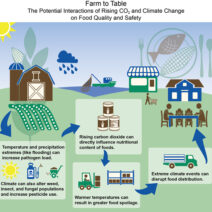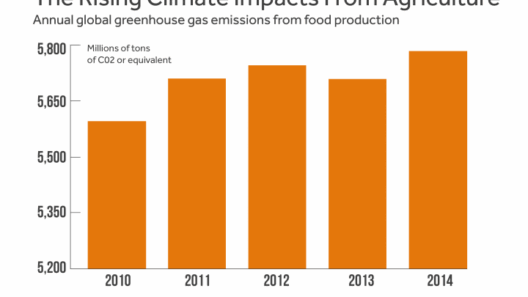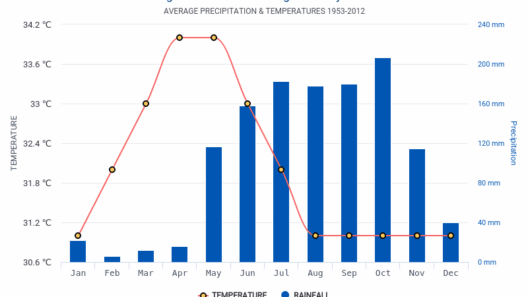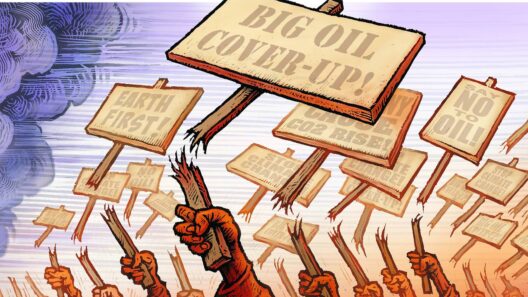The specter of climate change looms large over humanity’s collective future, with consequences that promise to be profound and multifaceted. The continuum of our climate crisis is underscored by a series of alarming projections that suggest a cataclysmic transformation of our planet—a transformation that will render vast swaths of land uninhabitable, exacerbate resource scarcity, and lead to unprecedented socio-economic upheaval. Facing these realities can provoke an urgent shift in perspective, compelling societies to address the profound implications of unmitigated climate change.
Foremost among the dire consequences of ongoing climate change is the escalation of extreme weather phenomena. As global temperatures rise, the atmosphere can hold more moisture, leading to more intense hurricane activity, torrential rainfall, and catastrophic flooding. Conversely, regions that are already arid may find themselves ensnared in the grip of debilitating droughts. This brutal dichotomy—floods in some areas and droughts in others—does not simply threaten individual ecosystems; it jeopardizes entire agricultural systems and, by extension, global food security. Scientists project that crop yields for staples such as wheat, rice, and maize could decrease by up to 25% in some regions by 2050, a precipice upon which we already teeter.
The implications of these agricultural disruptions resonate foremost in the developing world, where populations often lack the resources to adapt to such rapid changes. As food shortages become more prevalent, malnutrition and associated health crises will proliferate, particularly among vulnerable populations. This scenario proffers a grim outlook; the phenomenon will invariably catalyze mass migrations as those most affected flee famine-stricken areas in search of more livable conditions. This phenomenon of climate refugees will challenge existing borders and intensify geopolitical tensions, as nations struggle to manage the influx of displaced individuals.
Moreover, as the climate continues to warm, the melting of polar ice caps and glaciers will accelerate, contributing to rising sea levels. Experts estimate that sea levels could rise by up to three feet by the end of the century if current trends persist. Such an increase would inundate coastal cities worldwide, from New York to Bangkok. The ramifications of such a scenario are manifold—thousands of communities would face existential threats, and economic losses could amount to trillions of dollars. Infrastructure designed to withstand the test of time may crumble under the weight of advancing waters.
Concurrently, the ecological ramifications of climate change are equally disconcerting. The delicate balance of biodiversity is already being disrupted, leading to shifts in species distribution. As habitats alter and ecosystems destabilize, iconic species such as polar bears, corals, and various amphibians may face extinction, should they fail to adapt quickly enough. This loss of biodiversity has cascading effects on ecosystem services that humanity depends on, including pollination, clean water, and carbon sequestration. Consequently, the very foundations of human existence become increasingly precarious.
In urban environments, the heat island effect exacerbates the dangers posed by climate change. Cities will become insufferably hot, with heatwaves claiming lives and stressing public health systems. The direct consequences on human health are particularly alarming, affecting vulnerable populations with pre-existing conditions. Beyond mere discomfort, this rising temperature could lead to increased respiratory ailments due to worsened air quality, alongside a proliferation of vector-borne diseases as warmer temperatures allow disease-carrying insects to flourish in previously inhospitable regions.
Economically, the toll of climate change can be expected to be monumental. Industries reliant on predictable weather patterns, such as agriculture, fishing, and tourism, will face disruption in unpredictable markets. Insurance costs will likely soar as risk assessments sour, rendering parts of the world uninsurable. As economies grapple with mitigation and adaptation measures, conflicting interests among stakeholder groups may lead to political paralysis or inefficacy, exacerbating societal breakdowns.
This impending countdown to disaster is not merely a matter of waiting for inevitable consequences; the human element imbues the climate crisis with urgency. The actions taken today—or the lack thereof—will unequivocally dictate the shape of our planet tomorrow. Individual and collective efforts to curtail greenhouse gas emissions represent a singular opportunity to alter our trajectory. Renewable energy technologies, sustainable agricultural practices, and a shift toward circular economies present pathways to ameliorate adverse effects; yet progress remains languid.
What remains paramount is acknowledgement and understanding at all societal levels. Educational initiatives and grassroots movements are imperative, emphasizing that climate change is not a distant phenomenon but an immediate, pressing reality. Public discourse needs to embrace a narrative that considers climate change a critical issue linked to social injustice, health, and ultimately, survival.
We stand at a pivotal juncture—the clock is ticking, and the consequences of our inaction will reverberate across generations. If climate change continues on its current trajectory, we may witness the erasure of entire cultures, the depletion of our natural heritage, and a fragile existence under harsher environmental conditions. Yet, through concerted action and an unwavering commitment to sustainability, a more positive future is conceivably within reach. It is time to awaken to this reality, to comprehend the fullness of our choices, for the future of our planet hangs precariously in the balance.








